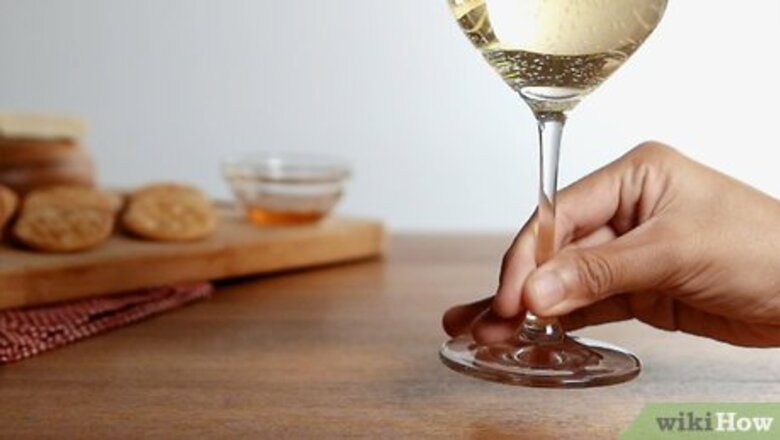
views
Holding a Traditional Wine Glass
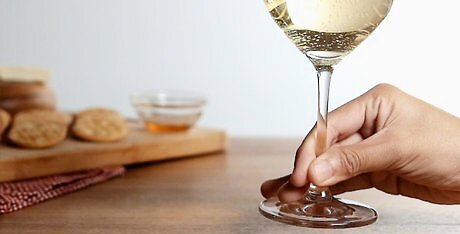
Hold the stem between your thumb and first two fingers. Pinch the stem of the wine glass between your thumb, index finger, and middle finger. As you position your fingers, place them on the lower half of the stem. Your middle finger should rest on the stem just above the base. Only these three fingers will come into direct contact with the stem of the glass. Your remaining two fingers should naturally rest on top of the base. This is the standard way to hold a wine glass. Holding it in this manner should provide plenty of stability while keeping your hands away from the bowl of the glass.
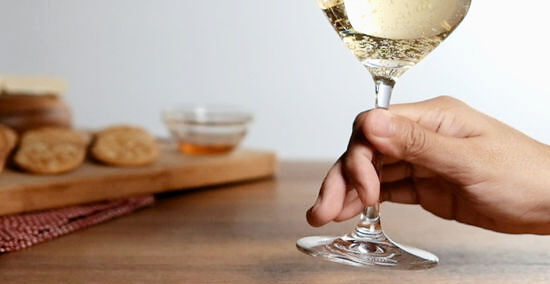
Pinch the stem with your thumb and index finger. Wrap your index finger around the one side of the stem, then support the other side of the stem with the tip of your thumb. Keep your hand positioned toward the lower half of the stem. Your remaining three fingers should curl into your palm in the form of a loose fist. Generally, these fingers won't touch the base of the glass, but it's find if they brush against it.

Grab the stem directly above the base. Pinch the stem of the glass just above the base using only your thumb and index finger. Even though these two fingers pinch the stem of the glass, they also brush against the top of the base. Use your middle finger to support the glass from beneath by extending it outward along the underside of the base. Allow your remaining two fingers to rest naturally. They may press into the palm of your hand or follow along with your middle finger.
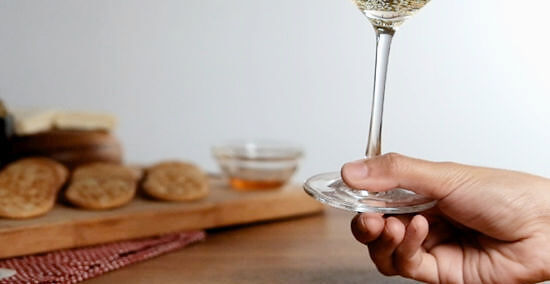
Lever the base with your thumb. Keep your thumb over the base of the glass while supporting the underside of the base with your index and middle fingers. None of your fingers actually touch the stem of the glass when using this technique. Your index, middle, ring, and pinky fingers should all curve gently into your palm. Use the top portions of your index and middle fingers to support the base. Note that this holding style is socially acceptable, but it's also the least stable. It's best to practice it when you're by yourself before using it in polite company.

Never hold the bowl. Holding a wine glass by the bowl is social taboo, but the reasons for that are as practical as they are polite. Both the taste and appearance of the wine can be negatively affected when you hold the bowl. When you hold the bowl of the glass, the heat of your hands will quickly cause the wine inside to warm up. This problem is most pronounced when sipping white wine or champagne since these types of drinks taste best when chilled. The problem isn't quite as severe when drinking red wine, but even red wine tastes best when kept a little cooler than room temperature. Additionally, holding the glass by the bowl can leave fingerprints, which makes the appearance of the wine glass less elegant. Both your fingers and the prints they leave behind can also make it harder to examine the color or clarity of the wine.
Holding a Stemless Wine Glass
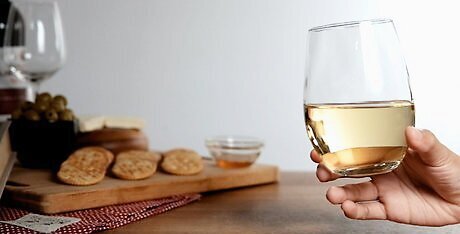
Grab the glass toward its base. Since this type of wine glass has no stem, you'll have to hold it like a normal drinking glass. Grab the glass toward its base, however, instead of holding it at the middle or top. You can wrap your thumb and all four fingers around the glass if you need to do so for the sake of stability, but if possible, try to keep only your thumb and two fingers on the glass itself. The other two fingers should gently curl away from the glass or support the glass from underneath.

Minimize contact. Since the heat of your hand can warm up the temperature of your wine, it's best to hold your stemless wine glass as briefly and infrequently as possible. Try to hold the glass only when taking sips. If you can set it down somewhere, do so when you aren't actively drinking the wine. Fingerprints are pretty much inevitable when you use this type of wine glass. That social faux pas usually won't matter when you're among family and friends, but if you're hanging around wine connoisseurs or trying to make a good impression on someone new, it's best to put the stemless glasses away and opt for the traditional glass type instead.
Related Etiquette
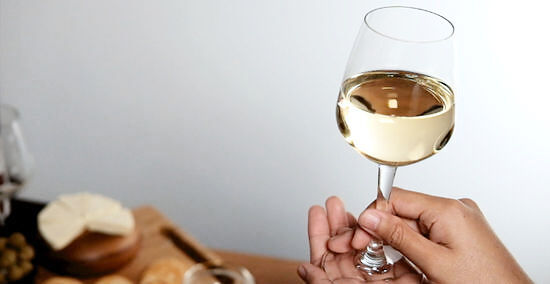
Rest the glass when needed. If you are unable to set your glass down and feel the need to support it in between sips, you can rest the base of the glass on the palm of your non-dominant hand while continuing to hold the glass at its stem with your dominant hand. When you need to set the glass down at your dinner table, note that it should be placed to the right of your water glass. If you don't have a water glass, simply place your wine glass down in the upper left corner of your place setting, where the water glass usually sits.

Sip from the same spot. Try to drink from only one spot along the rim of the wine glass. Doing so can improve the scent and appearance of your wine. If you sip from too many different places along the rim of the glass, the excess contact can actually taint the scent of the wine. Since scent and taste are closely linked, this could also degrade the taste of the wine. Additionally, your lips leave a print on the glass like your fingers do, even if you aren't wearing lipstick, balm, or gloss. Sipping from only one spot makes the top of your glass look cleaner.
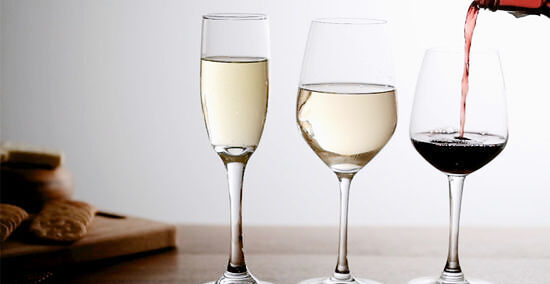
Keep the glass partially full. As a general rule, you should only keep the glass one-third full when drinking red wine or half full when drinking white wine. On a similar note, when drinking champagne or sparkling wine from a champagne flute, you should keep the glass three-quarters full. By only filling part of the glass, you can minimize the risk of accidental spills. Completely full glasses can get heavy, and since you can only support the glass by its stem instead of the bowl, your hand may weaken and slip beneath the weight of the wine.
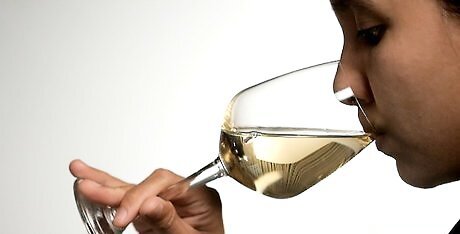
Look into your glass as you drink. As you go to take a sip of your wine, direct your gaze into your glass instead of focusing on another person or object. Looking at someone else as you sip your wine is considered especially impolite. This is true regardless of whether or not you're in active conversation with anyone. On the other hand, you should maintain eye contact with someone when making a toast. Lock eyes with whomever clinks glasses with you. Doing so is polite, and superstition holds that failing to do so can mean seven years of bad luck.

Tilt the glass when studying its appearance. If you want to study the appearance of the wine, tilt the glass slightly while holding it up to the light. Use natural light when possible. If you aren't able to get a good view of the color and clarity, position your glass against a white or pale background to make the viewing process easier.
Swirl the wine carefully. Swirling your wine is socially acceptable as long as you don't get carried away. The key is to gently swirl the glass in small circular movements while keeping the base on a flat surface. Keep a firm grip on the stem of the glass as you swirl it and only continue swirling for 10 to 20 seconds. If you have a loose grip, move the glass too forcefully, or swirl the glass for too long, you run the risk of accidentally spilling your wine. Swirling the wine around can also help any unpleasant notes in the wine dissipate before you drink it.
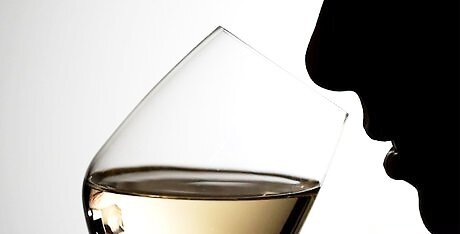
Hold the glass directly to your nose when smelling. When checking the scent of a particular wine, tilt the glass slightly and place your nose directly inside. Alternatively, you could hold your nose roughly 1 inch (2.5 cm) away from the top of the glass instead of sticking it directly inside. Some people are able to detect more of the scent by doing it this way while others prefer the traditional technique. Either way is socially acceptable, though.




















Comments
0 comment